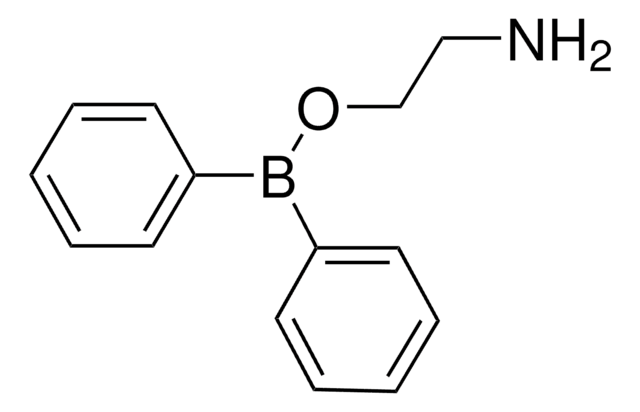Kluczowe dokumenty
P2008
Polyanetholesulfonic acid sodium salt
powder
Synonim(y):
Sodium polyanetholesulfonate
About This Item
Polecane produkty
Formularz
powder
warunki przechowywania
(Tightly closed. Dry.)
kolor
yellow
rozpuszczalność
water: 1 g/10 mL, clear to hazy, yellow to very dark yellow-orange
ciąg SMILES
C/C=C/C1=CC=C(C=C1)OC.[O-]S(=O)[O-].[Na+]
InChI
1S/C10H12O.Na.H2O3S/c1-3-4-9-5-7-10(11-2)8-6-9;;1-4(2)3/h3-8H,1-2H3;;(H2,1,2,3)/q;+1;/p-2/b4-3+;;
Klucz InChI
JKJBFNAERWARKW-CZEFNJPISA-L
Szukasz podobnych produktów? Odwiedź Przewodnik dotyczący porównywania produktów
Powiązane kategorie
Opis ogólny
Zastosowanie
- has been used as a component in BACTEC plus aerobic/F medium or blood culture media to decrease the barrier for bacterial growth
- has been used to inhibit the activity of classical pathway (CP) and alternative pathway (AP)
- may be used in the preparation of bifunctional/polymeric composite gel beads to remove cationic dyes
Działania biochem./fizjol.
Inne uwagi
produkt podobny
Hasło ostrzegawcze
Warning
Zwroty wskazujące rodzaj zagrożenia
Zwroty wskazujące środki ostrożności
Klasyfikacja zagrożeń
Eye Irrit. 2 - Skin Irrit. 2 - STOT SE 3
Organy docelowe
Respiratory system
Kod klasy składowania
11 - Combustible Solids
Klasa zagrożenia wodnego (WGK)
WGK 3
Temperatura zapłonu (°F)
Not applicable
Temperatura zapłonu (°C)
Not applicable
Środki ochrony indywidualnej
dust mask type N95 (US), Eyeshields, Gloves
Wybierz jedną z najnowszych wersji:
Masz już ten produkt?
Dokumenty związane z niedawno zakupionymi produktami zostały zamieszczone w Bibliotece dokumentów.
Klienci oglądali również te produkty
Nasz zespół naukowców ma doświadczenie we wszystkich obszarach badań, w tym w naukach przyrodniczych, materiałoznawstwie, syntezie chemicznej, chromatografii, analityce i wielu innych dziedzinach.
Skontaktuj się z zespołem ds. pomocy technicznej










